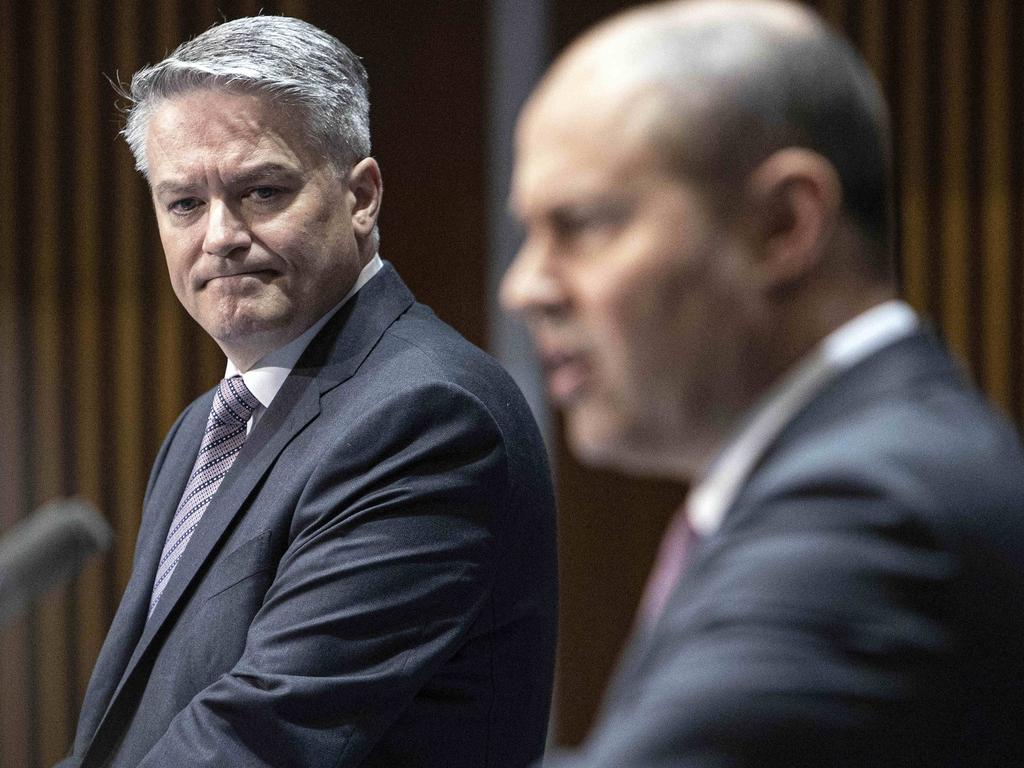Deficit ‘high but less than predicted’
The October 6 budget deficit will be ‘just’ $14bn worse than forecast in July because resource prices have not fallen as steeply as expected, Deloitte economists say.

The October 6 budget deficit will be “just” $14bn worse than forecast in July — before Victoria entered a strict lockdown — because resource prices have not fallen as steeply as expected, Deloitte economists say.
Chris Richardson, in budget analysis released on Monday, said Deloitte forecast a budget deficit of $198.5bn, with corporate and personal tax revenues expected to be higher than the “low bar set for them in official forecasts”.
His comments came as the Office of the Chief Economist released new forecasts that estimate resource and energy export revenues will fall from $290bn in the last financial year to $252bn by 2021-22.

That’s a $10bn deterioration since previous forecasts released in June.
The new figures show the likely price of iron ore will drop from $US78 ($110) a tonne last year to $US66 in 2021.
Despite exports rising from 860 megatonnes to 905 megatonnes in that time, their value would fall from $102bn to $80bn.
Mr Richardson, said the price for iron ore and other commodities had not fallen steeply — as expected by Treasury — leaving the budget in a better position.
“Treasury assumed iron ore prices would immediately nosedive, almost halving to $US55 a tonne ahead of Christmas,” Mr Richardson, Deloitte Access Economics’ chief economist, said in his budget analysis.
“But they’ve actually gone up, trading at double those rates … and Treasury was very conservative in its other forecasts, including of jobs and inflation.”
The price of metallurgical and thermal coal — which combined were the second-largest resource export by value last year — were expected to fall 31 per cent and 29 per cent this year to $US129 and $US68 a tonne respectively, according to the OCE.
The budget update from July pencilled in metallurgical and thermal coal prices of $US110 and $US54 a tonne respectively by December.

The Deloitte analysis, which stressed the better than expected jobless numbers since the July budget update, nevertheless forecast that federal debt would be $401bn higher than Treasury’s pre-COVID forecasts by June 2023.
Border closures have significantly dented net overseas migration, which is predicted to be almost 300,000 fewer by mid-2021, it said.
Mr Richardson also backed a move to bring forward tax cuts legislated for 2024, saying he did not agree with claims they were “unfair”, given the top 5 per cent of taxpayers were on track to pay more tax.
His budget report said if Josh Frydenberg fast-tracked income tax cuts in next Tuesday’s budget, they must be packaged with other stimulus measures.
The Treasurer said the government’s new fiscal strategy would focus “on bringing hundreds of thousands of more Australians back to work, which will underpin a stronger medium-term fiscal position”.
“The (Deloitte) report also states that the COVID-19 recession in Australia is ‘comfortably smaller than seen in much of the developed world’ because of our decisive action on both the health and economic fronts,” he said.
Labor’s Treasury spokesman Jim Chalmers said the report backed his policy suggestions, including a bigger investment in social housing and aged care and a permanently higher unemployment benefit.
“New spending needs to get bang for buck, protect jobs, create secure jobs, train and upskill Australians and support families doing it tough,” Dr Chalmers said.







To join the conversation, please log in. Don't have an account? Register
Join the conversation, you are commenting as Logout